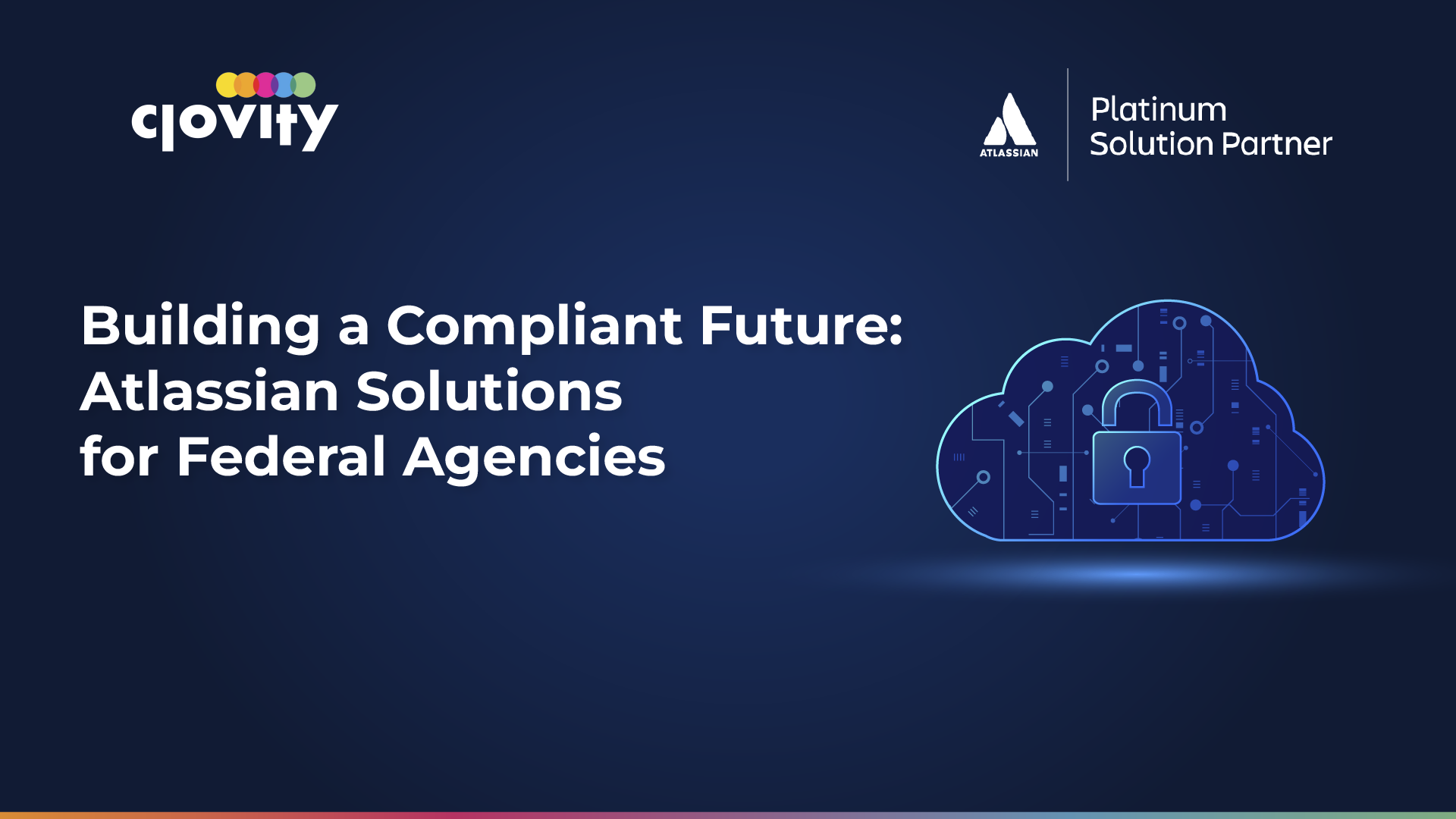Federal agencies operate under strict regulatory frameworks and must manage complex, mission-critical projects while maintaining rigorous standards for security, transparency, and auditability. Balancing these priorities while adopting modern digital collaboration tools can be challenging. That’s where Atlassian’s suite—especially Jira Software, Jira Service Management, and Confluence—proves highly valuable.
For agencies managing IT operations, service requests, knowledge sharing, and cross-team collaboration, Atlassian’s solutions offer a flexible yet structured environment to ensure regulatory compliance while supporting long-term scalability and efficiency. This blog explores how federal teams can align their requirements with Atlassian’s capabilities to build a compliant, collaborative workspace.
1. Understanding Compliance Needs for Federal Teams
Federal agencies face unique mandates—FISMA, FedRAMP, and NIST guidelines—that demand strict controls over data storage, management, and access. Meeting these standards requires robust workflows, documentation practices, and audit trails. Atlassian Cloud now offers FedRAMP Moderate-authorized environments, making secure cloud adoption possible without heavy customization.
2. Using Jira Software for Secure Agile Project Management
Jira Software supports federal IT projects—system upgrades, cybersecurity initiatives, infrastructure rollouts—by providing:
- Custom workflows that enforce review and compliance checkpoints.
- Fine-grained roles and permissions for sensitive data access.
- Built-in audit trails recording every update for verification.
- Agile boards (Scrum/Kanban) that balance flexibility with regulatory structure.
3. Managing Service Requests with Jira Service Management
Jira Service Management (JSM) modernizes internal service operations—HR, finance, IT—while supporting compliance:
- Form-based intake with conditional logic to route requests accurately.
- SLAs and reporting to demonstrate timely response and resolution.
- ITIL-based change management with approvals and rollback logs.
- Asset management for licenses, hardware, and facilities in one place.
4. Sharing Knowledge Securely with Confluence
Confluence centralizes documentation—SOPs, training, policies—while enforcing access controls:
- Page permissions and restrictions to secure sensitive content.
- Compliance-ready templates for consistent documentation formats.
- Jira integrations linking requirements and policies to project work.
- Version history maintaining full audit trails of edits.
5. FedRAMP-Authorized Cloud Hosting for Peace of Mind
Atlassian’s FedRAMP Moderate accreditation delivers:
- Encryption in transit and at rest for data protection.
- Identity-provider integrations and multi-factor authentication.
- Built-in redundancy and uptime SLAs for resilience.
- Auditable controls and logs for compliance reviews.
6. Integration and Automation Across Teams
Native integrations and automation reduce manual effort and ensure consistency:
- Jira + Confluence for end-to-end traceability of documentation and issues.
- Jira + JSM to escalate service tickets into project backlogs.
- Automation rules to notify teams, update fields, and enforce workflows without custom code.
7. Supporting Remote and Hybrid Workforces
Atlassian tools maintain visibility and accountability regardless of location:
- Real-time updates on Jira tasks and Confluence pages.
- Notifications and mentions to keep stakeholders informed.
- Secure mobile apps for on-the-go access to tasks and documentation.
8. Clovity’s Role in Federal Atlassian Deployments
As a Gold Solution Partner, Clovity delivers:
- Configuration aligned with FedRAMP and NIST requirements.
- Technical and non-technical user training.
- Custom forms, workflows, and automations for HR, finance, and IT.
- Ongoing support, health checks, and license management.
Final Thoughts
Federal agencies face increasing pressure to modernize within regulatory guardrails. By aligning operations with secure, scalable tools like Jira Software, Jira Service Management, and Confluence, teams spend less time on red tape and more time achieving their missions.


